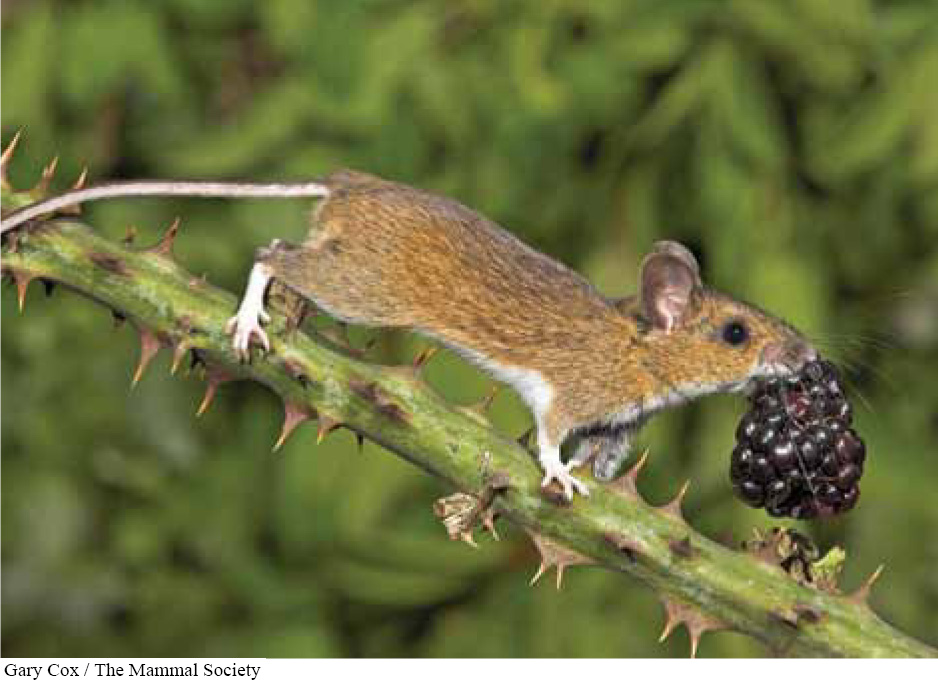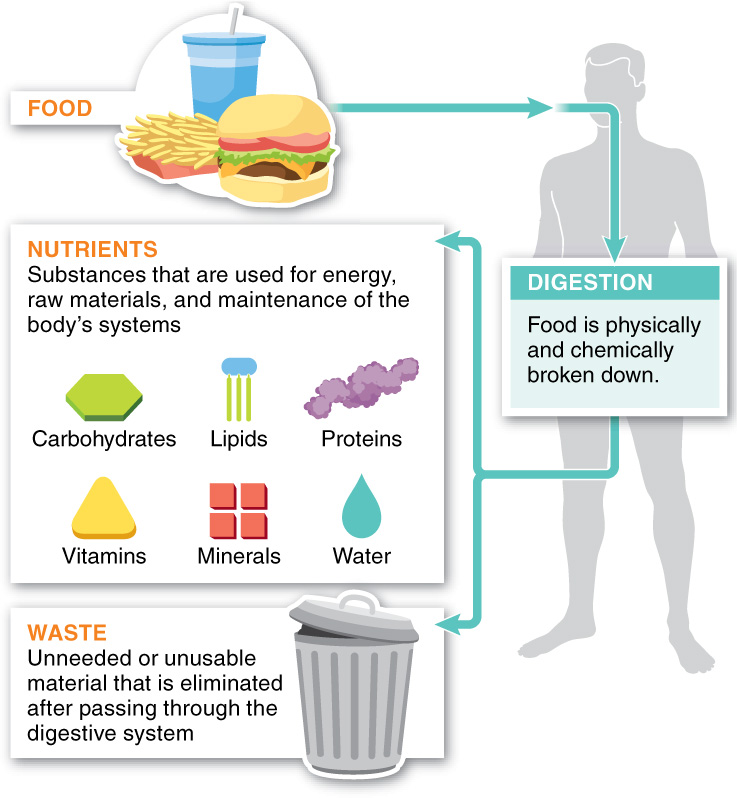
Lamb roulade with leek basil stuffing and a red wine sauce. Chili fries. Lime-

Here’s why: every second of every day, chemical reactions are occurring inside us. We build complex molecules. We reproduce. We respond to stimuli. Our need for fuel is one of the two reasons why we must eat: building a body, moving around, reproducing, and just staying alive all require energy. Food provides that energy. And the other reason is that to grow and to build the myriad complex molecules required for life, we need raw materials: molecules of carbon and nitrogen and phosphorus, to name just a few. Food provides these raw materials.
What exactly happens to the food we eat? We’ll examine this question in detail throughout the chapter. In FIGURE 22-1, though, we can see that the food we eat is physically and chemically broken down into its fundamental macromolecular components in the process of digestion. Our body quickly breaks down food and separates it into the usable and unusable. The usable materials are carbohydrates, lipids, proteins, vitamins, minerals, and water and are referred to as nutrients. These six crucial substances are used for energy, raw materials, and maintenance of the body’s systems. The unusable materials just pass through the digestive system and are eliminated.
875
Ultimately, an organism’s body weight reflects the balance between the energy carried within the molecular bonds of the food it consumes and the energy burned in the process of living. Any surplus calories are stored, usually as fat or as glycogen (see Section 2-
TAKE-HOME MESSAGE 22.1
Animals must eat for two reasons: to acquire the energy needed for all growth and activity, and to acquire the raw materials required for life.
What are the six groups of usable nutrients we obtain from our food?
The six groups of usable nutrients are carbohydrates, lipids, proteins, vitamins, minerals, and water.